Service History
The schooner
Byron represents a rare example of a once common vessel type on the Great Lakes, the trading schooner. The small lakeshoring schooner provided economic and cultural links between Lake Michigan's hinterland communities. Throughout the nineteenth century, these small schooners occupied a niche trade in the Lake Michigan economy; today, however, there is a virtual absence of documentation of this vessel type and trade on the Great Lakes.
The
Byron, like many other small Great Lakes craft, was undocumented. At 35 feet in length, it was dwarfed by most other Great lakes vessels. Yet, small craft were frequently employed in supplying the specific transportation needs that were local to their owners' communities, and sometimes were only a component of a larger business plan. The
Byron appears to have been built around 1849. It was likely commissioned by William Burmeister of Manitowoc, Wisconsin; Burmeister sailed Lake Michigan as the
Byron's master, and introduced his son, also named Byron, to lake sailing at an early age. Little is known about how the
Byron operated in its early years; the only reports available state that it sailed lumber products between Manistee, Michigan, and Milwaukee, Wisconsin. The
Byron first made print in the
Manitowoc Pilot in 1866, when it was reportedly laid up for winter in the Manitowoc Harbor.
Final Voyage
The
Byron's second and final appearance in the newspaper occurred the following spring, in 1867. On the evening of May 8, the
Byron was underway to Manitowoc from Milwaukee when it encountered the schooner
Canton four miles offshore of Amsterdam, Wisconsin. Navigation rules required Captain Burmeister to keep clear of the
Canton, while the
Canton was required to maintain course and speed until the vessel passed. As the two vessels closed, the
Canton unexpectedly changed course, turning directly into the
Byron; the
Byron was dwarfed by the 219-ton hull. The Canton's bow struck the
Byron and began rolling the vessel under its momentum. Captain Burmeister, his son Byron, and passenger W.G. Luvell climbed aboard the
Canton's deck as the
Byron capsized.
The
Byron remained inverted for a few minutes before rolling onto its side. Captain Burmeister requested that the crew of the
Canton bring the schooner alongside the
Byron and attempt to right the smaller craft; the crew refused to do so. After lying on its side for approximately 15 minutes, the
Byron slipped beneath the surface. The
Canton's crew instead put the Burmeisters and Mr. Luvell into the yawl and rowed them ashore nearby. The three walked the beach, in the dark, for over ten miles until reaching Sheboygan. There, they were able to board a vessel for the remainder of their journey to Manitowoc.
At the time of loss, the
Byron was valued at approximately $1,000, and the cargo was an additional $400; the Burmeisters, however, did not have insurance on either the vessel or the cargo. In commenting on the accident, the
Manitowoc Pilot reported William Burmeister was "a steady, industrious gentleman," and they hoped it would be a short time before he replaced the property so "ruthlessly destroyed" by the
Canton. Two months later, the
Manitowoc Pilot reported that Captain Burmeister was indeed having a new schooner built at DePere. The name of the vessel that Burmeister commissioned is unknown, but it was presumably another vessel similar to the
Byron, too small to document or draw much attention by contemporary newspapers. No other references to the replacement vessel have been located.
Today
The
Byron lies in 135 feet of water twelve miles southeast of Sheboygan. It was discovered in May of 1977, when a commercial fisherman snagged the wreck and brought up one of the anchors in his net. Recreational divers quickly relocated the site, and much of the vessel's cargo and equipment were recovered in the following years. Some of the salvaged items included a second anchor, the compass, yellow ware bowls, porcelain plates, and a small porcelain cup, on which was written "A Present for a Good Girl," according to a report from diver James Brotz in 2008.
A video captured by diver John Steele in 1977 details what the wreck looked like when it was first discovered. In the video, the vessel does not have a bowsprit, but a single bobstay plate is visible fastened to the stem, indicating that it had a bowsprit that was either carried away in the sinking or during its encounter with the trawl net. The port and stem cabin bulkheads are still standing; the cabin roof is dislodged and lies over the starboard quarter. Within the cabin, a small stove and chimney are present. Several porcelain plates lie about the cabin aft of the stove.
Today, the
Byron is almost completely covered with a layer of zebra and quagga mussels. Most of the outer hull planks are intact, with the exception of the starboard turn of the bilge, where a few planks are missing. Due to its lightly-built nature and 140 years of submergence, the hull is extremely fragile. It is filled with a dense layer of silt, approximately 1 foot in depth, that makes access to the keelson assembly impossible without excavation. There are no signs of collision damage on the hull.
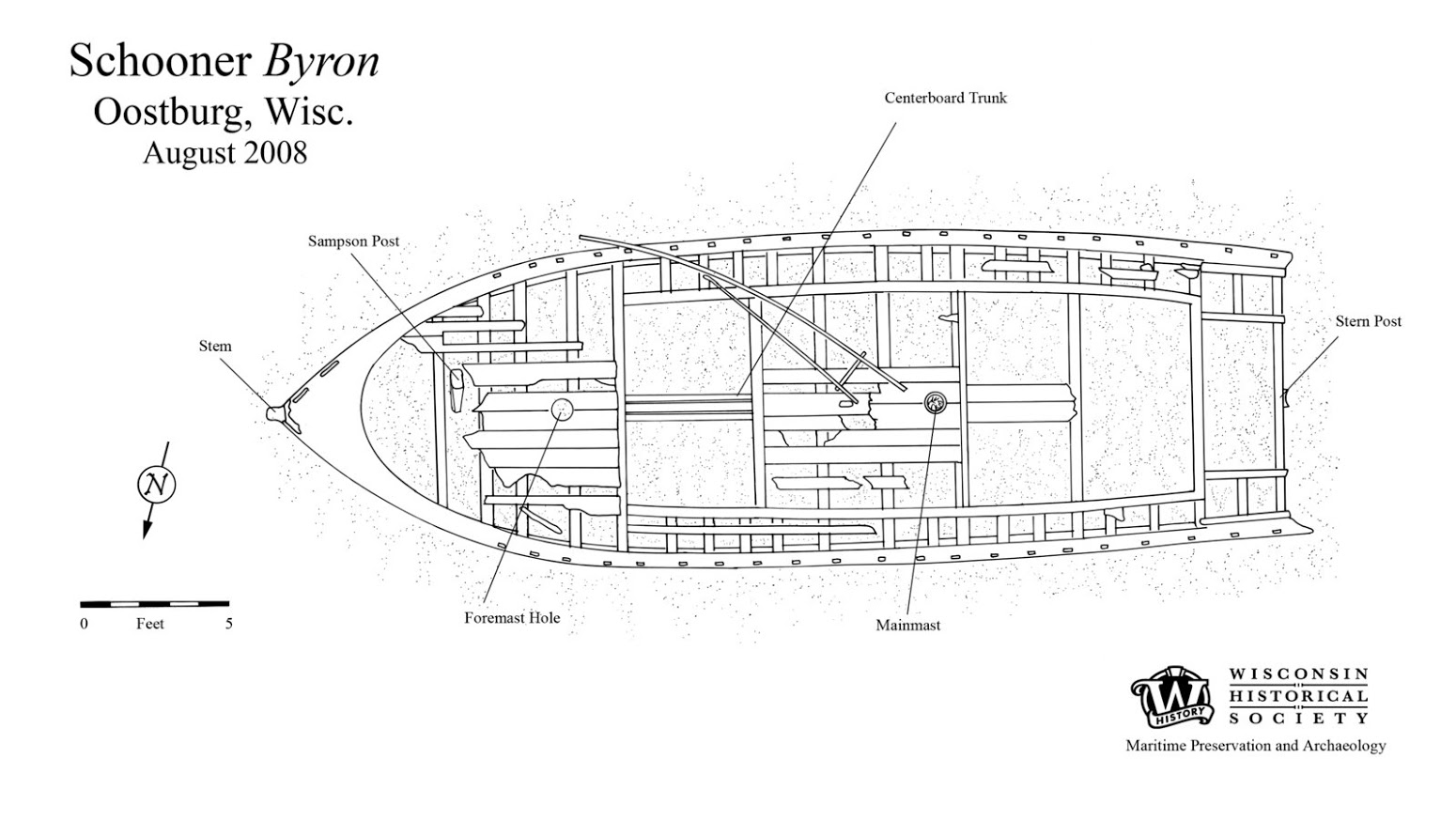
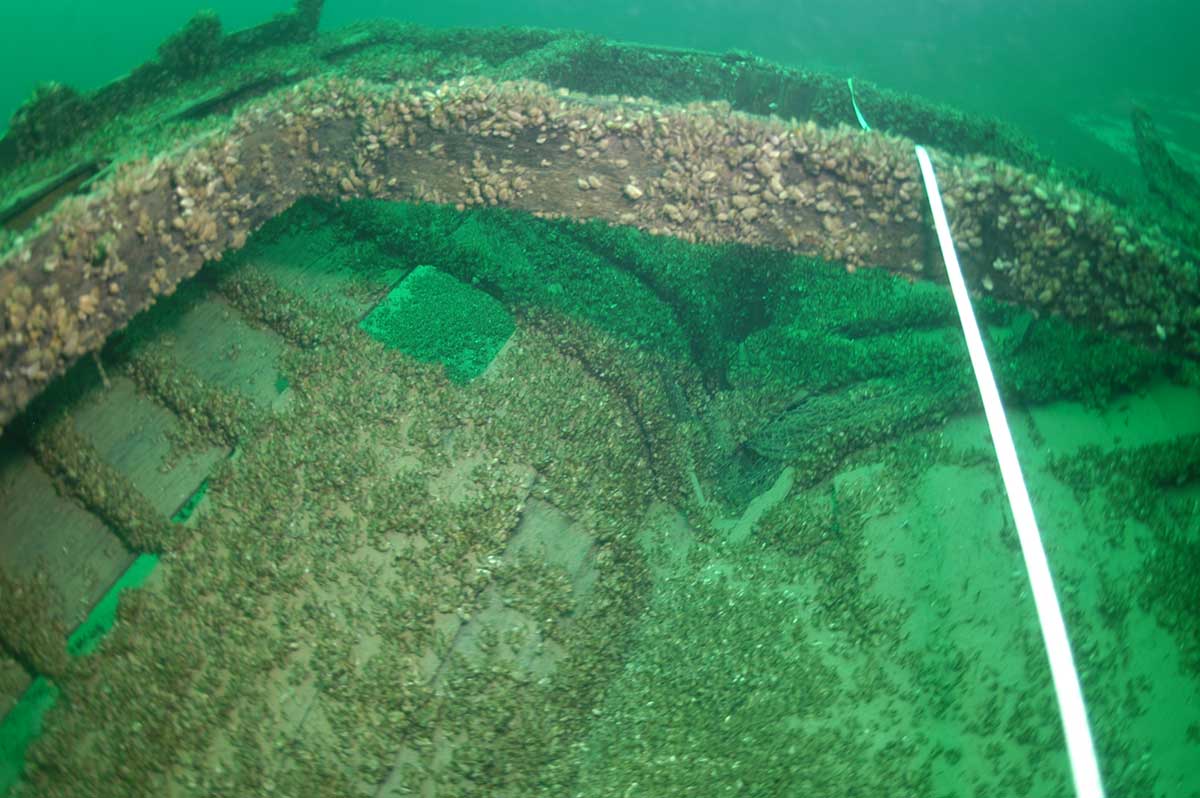
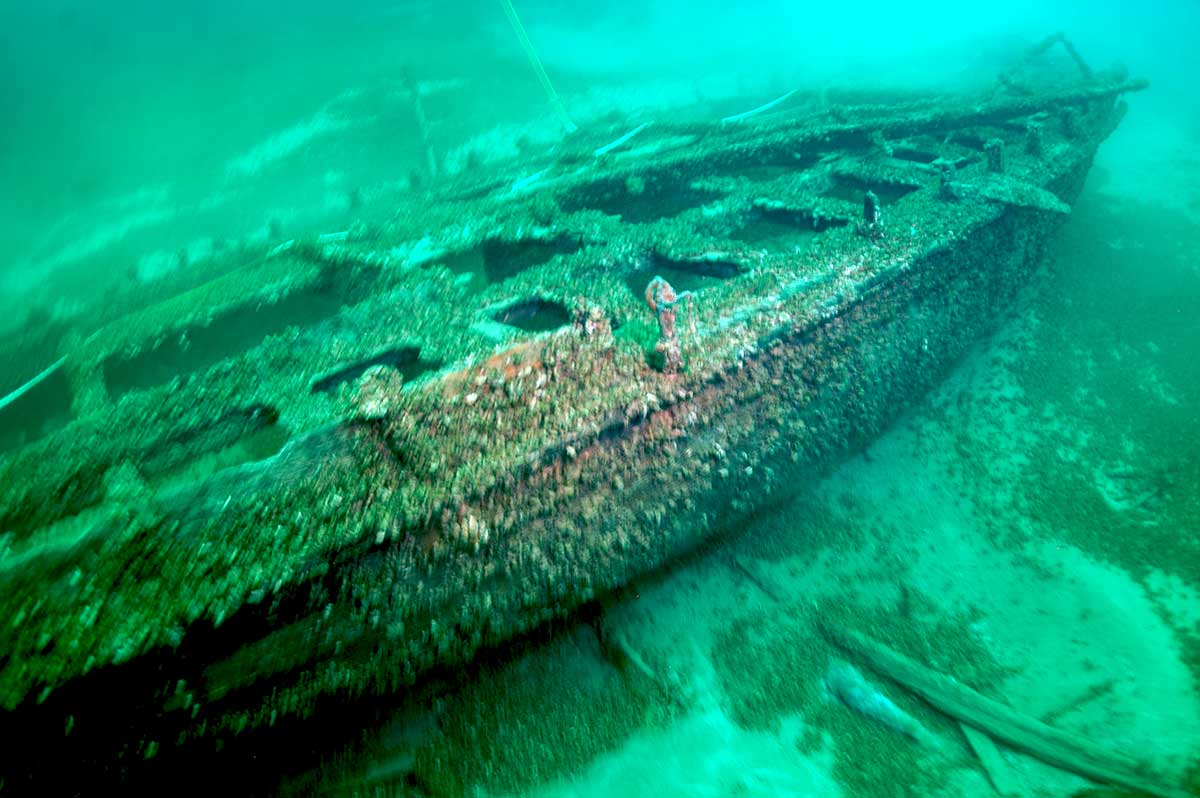
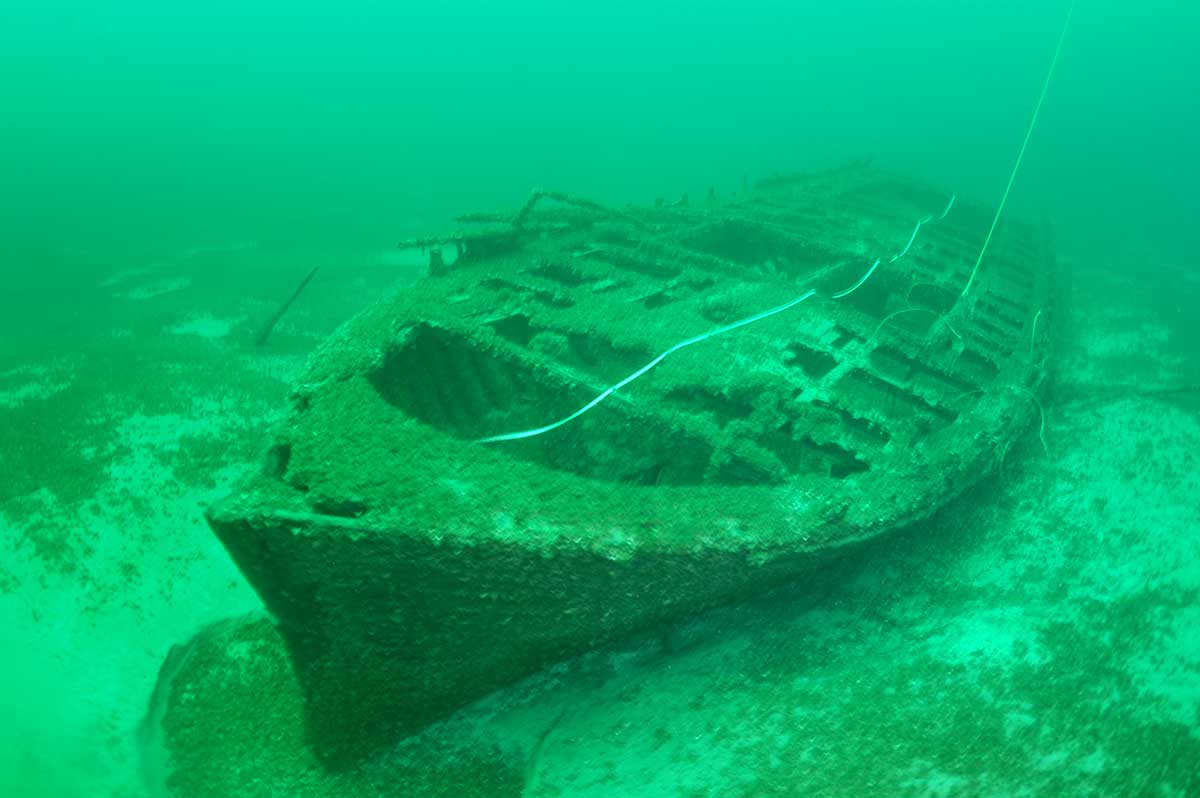
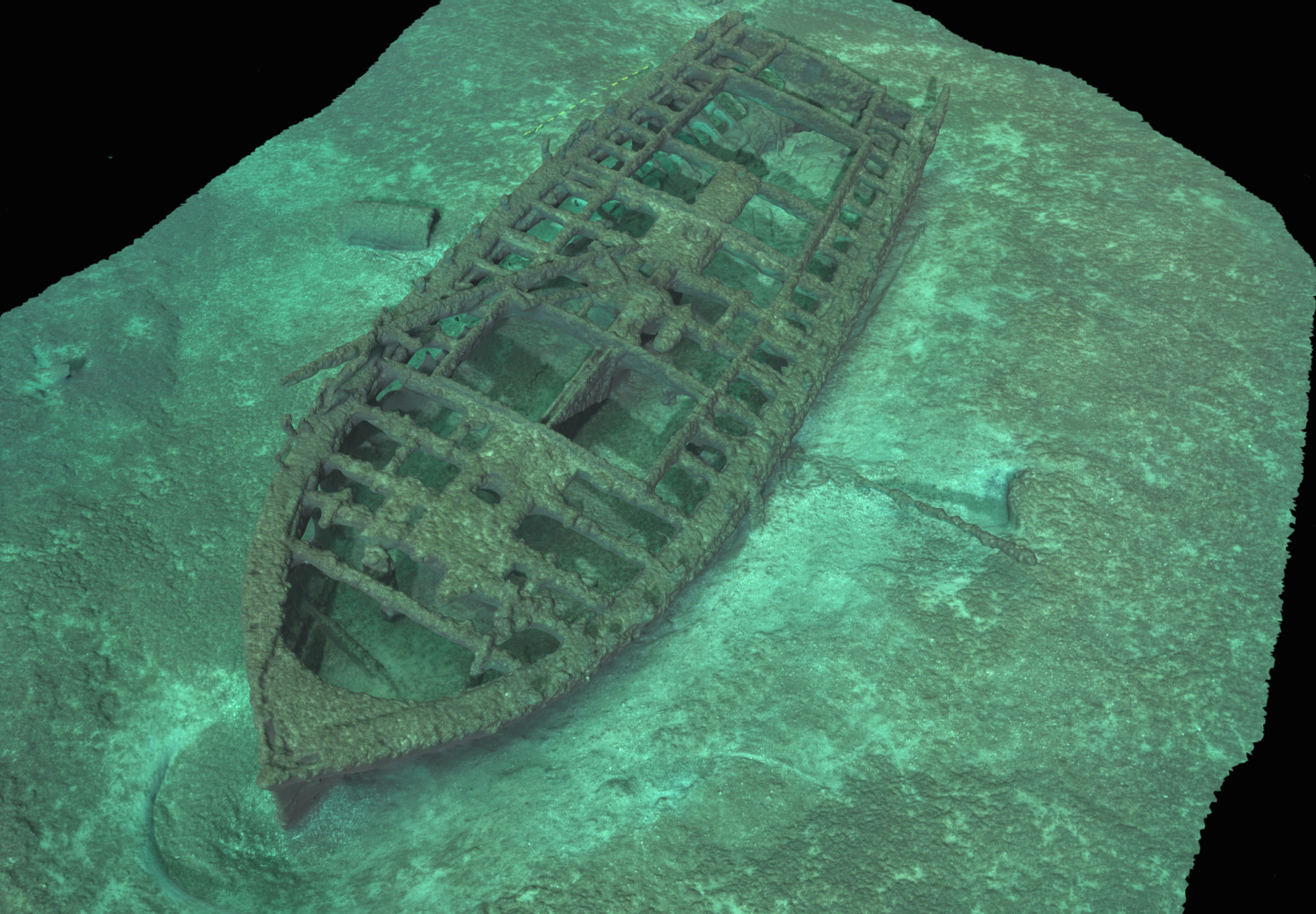
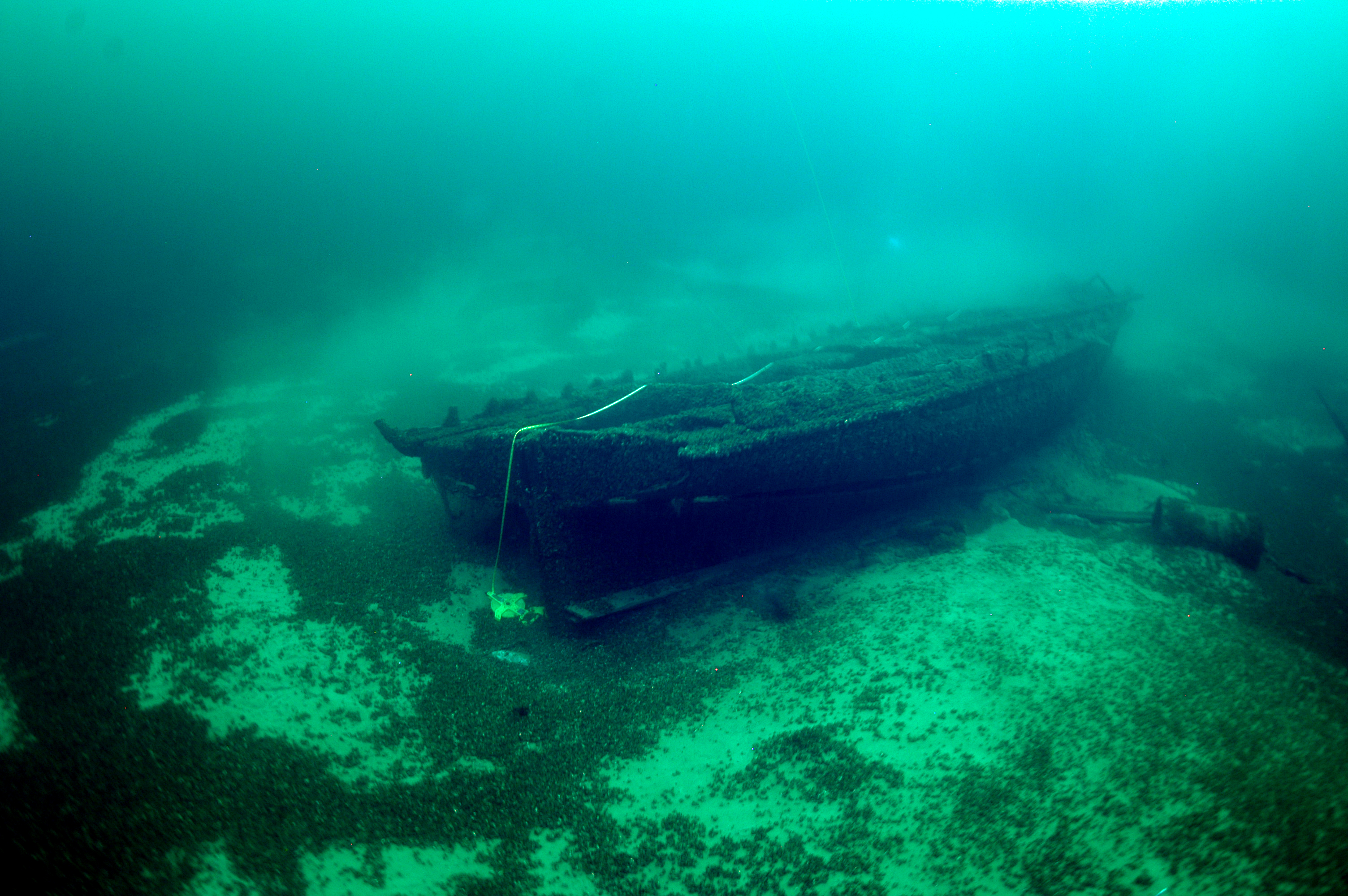
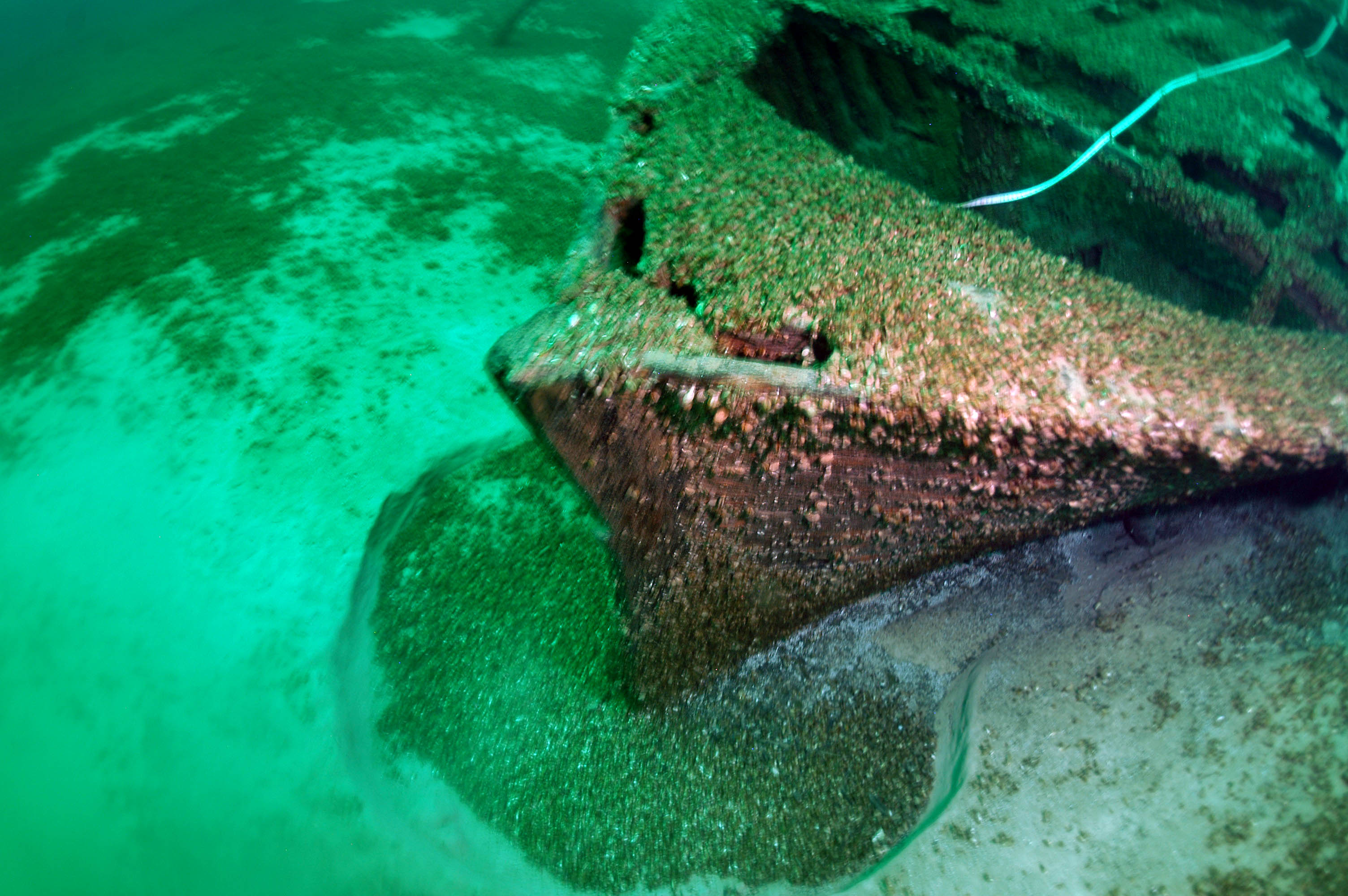
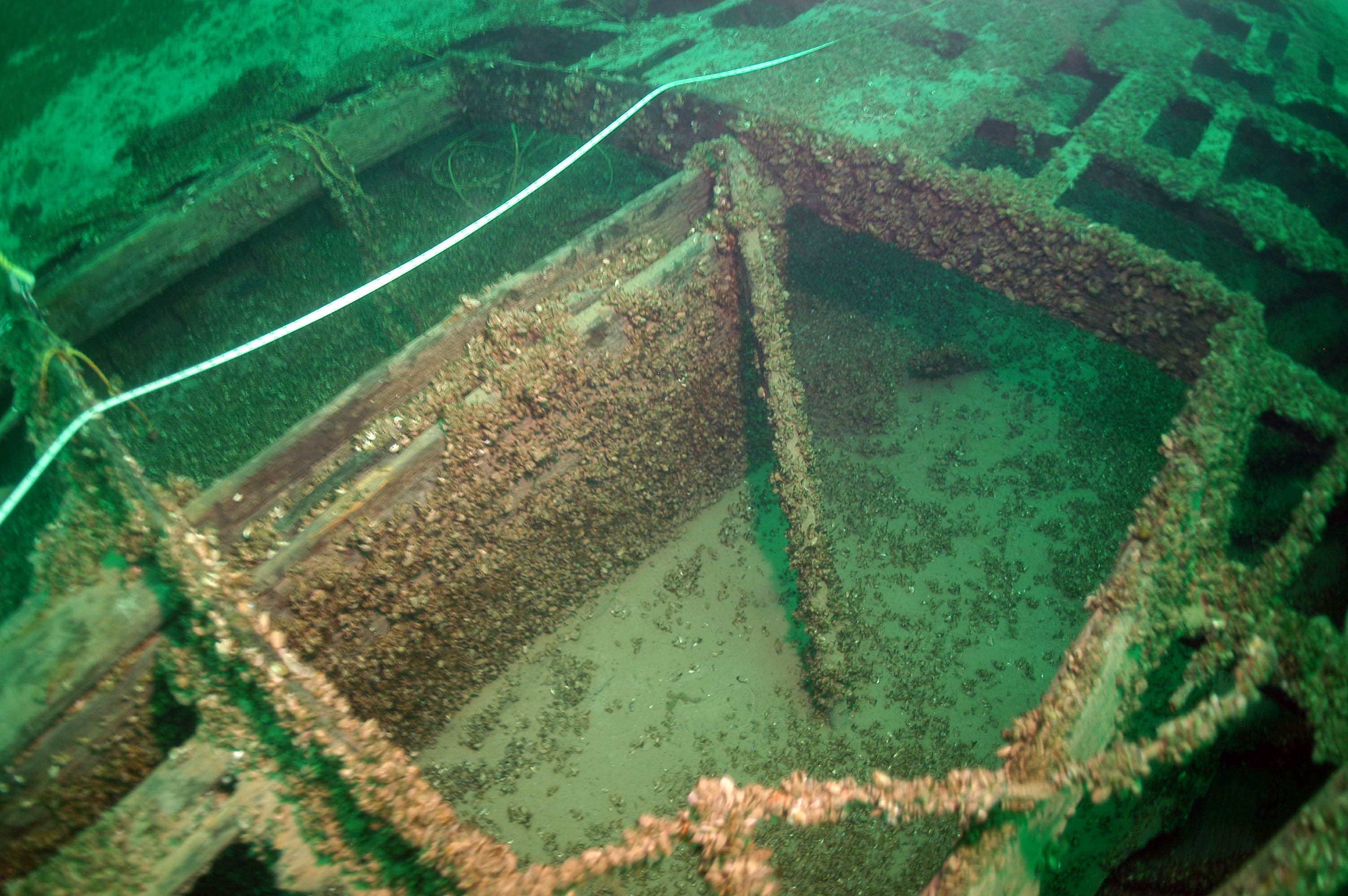
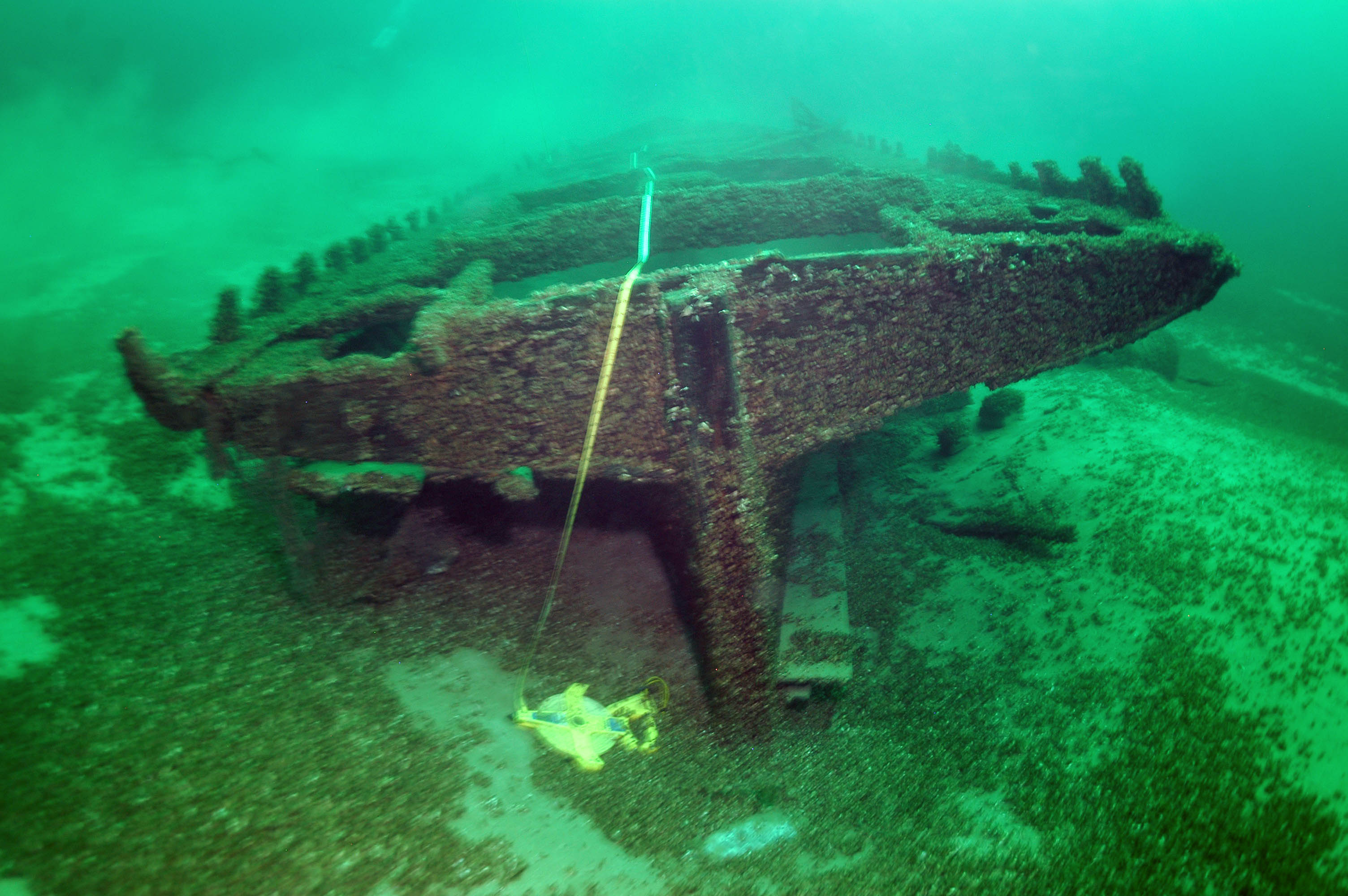
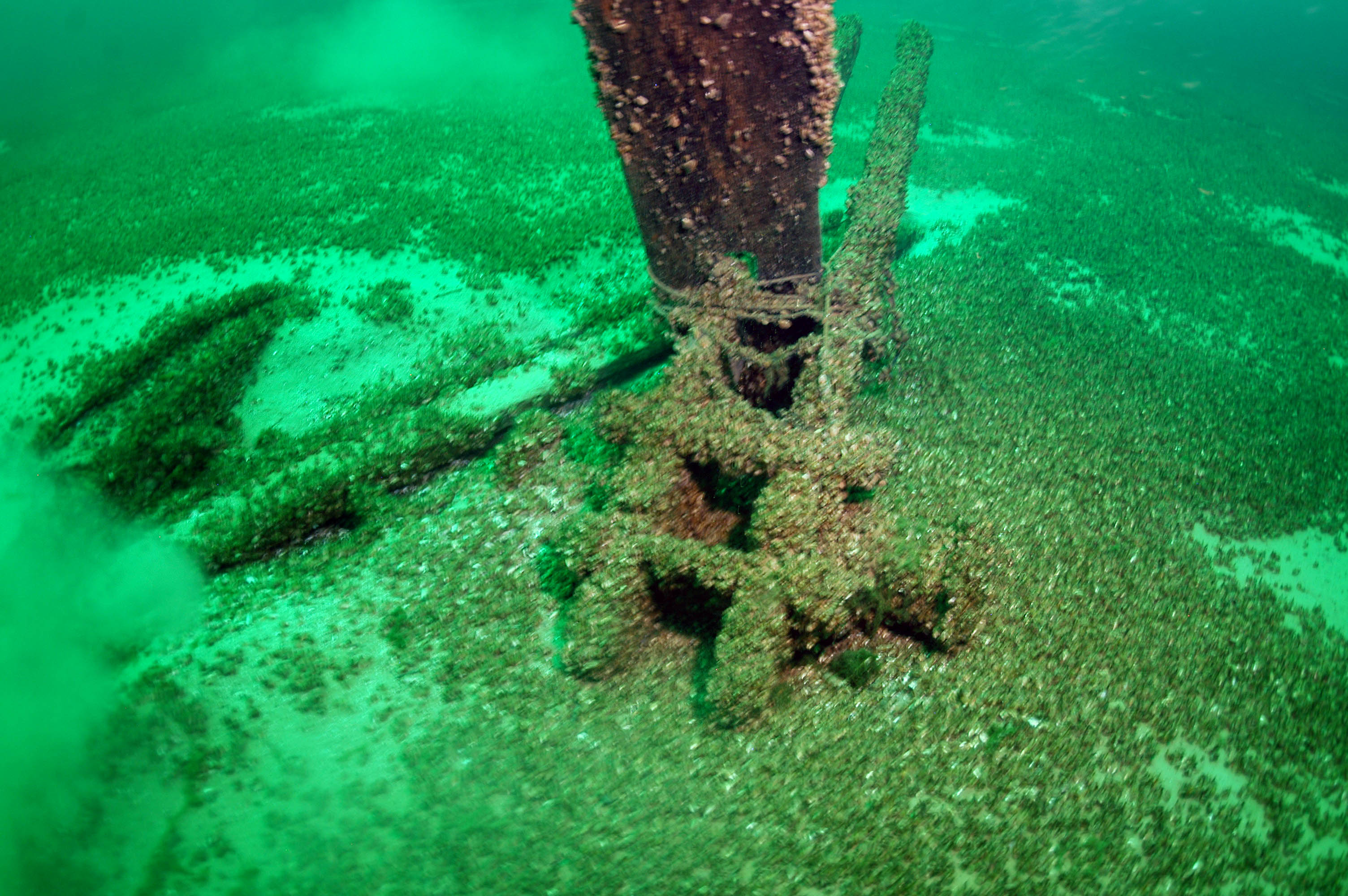

 Confirmed Location
Confirmed Location
 Unconfirmed location
Unconfirmed location